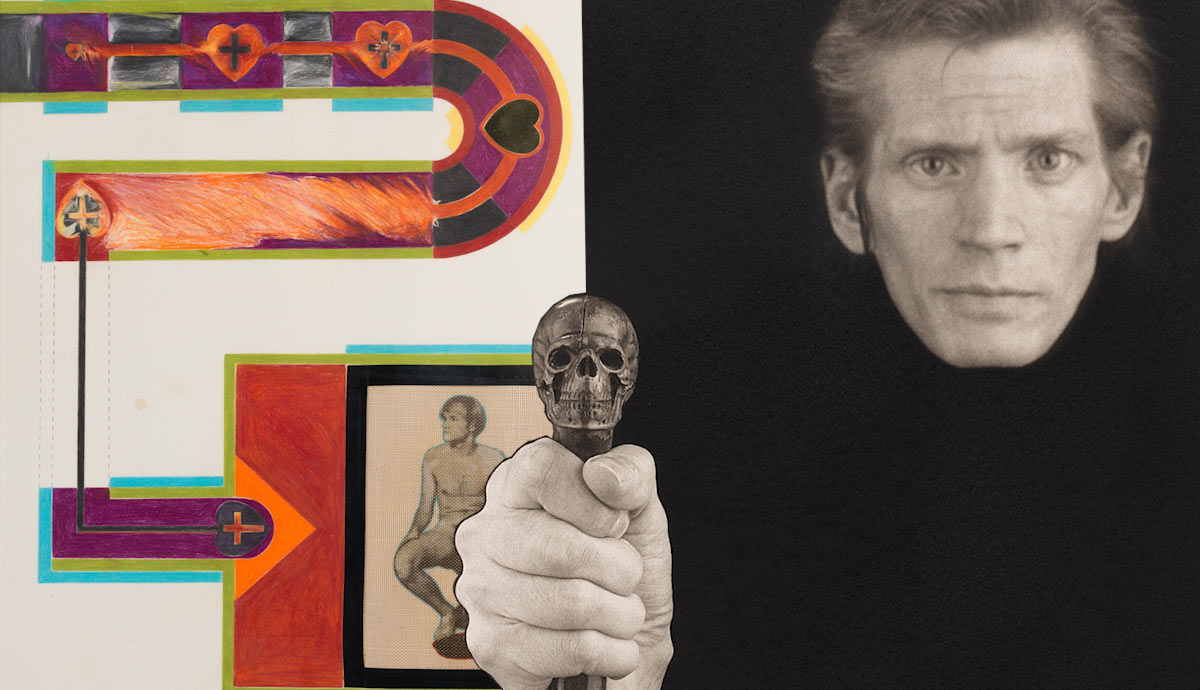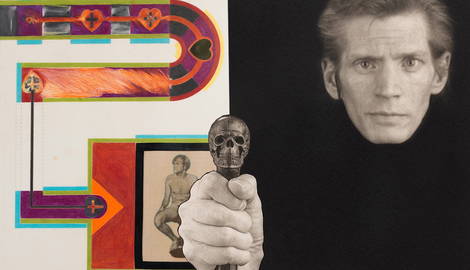
Robert Mapplethorpe was born in Queens, New York, in 1946. He was raised in a Catholic family. His mother even hoped that Robert would join the priesthood. Their devotion to religion would eventually lead him to become estranged from his parents. Instead of following the wishes of his parents, Mapplethorpe became an icon of homoerotic photography and left an everlasting mark on the history of modern art. Here are the things and people who inspired his art.
Robert Mapplethorpe’s Relationship with Patti Smith

After graduating from high school, Robert Mapplethorpe briefly attended Pratt Institute of Art but he dropped out before getting his degree. At the age of 21 in 1967, Mapplethorpe experienced a pivotal moment in his life when he met Patti Smith. This relationship would forever change both their lives and careers.
Smith arrived in the big city with hopes of pursuing a career in poetry, before diving into the world of punk rock. She ran into Mapplethorpe during her first days in New York. After an initial amusing encounter, the two artists started spending more time together, and soon, they became a couple.

Patti Smith goes into the intricacies of the most formative years of Mapplethorpe’s life as a first-hand observer, and on many an occasion, his muse as well. On the night the two young artists met, Robert took her to a friend’s house where they spent hours looking through his art portfolios. Smith described his early works as delicate and psychedelic, often influenced by his LSD trips.
They both worked at a toy store, with Patti at the cash register and Robert as a window trimmer. The little money they had went towards shared art supplies. Living in a small apartment near the Pratt Institute, the young couple filled their modest space with artworks and found objects.
Robert’s Collages

At the time, Mapplethorpe made collages—a technique that revolves around the use of images and artworks taken from books, magazines, or any other source to create new pieces through different arrangements. Mapplethorpe’s early collages often had homoerotic tones. The magazines he’d tear up for his artwork were dominantly homosexual erotic magazines, and he’d form the images in a way that reflected and parodied Christian imagery.
After getting a job at a bookstore, Smith brought home books on Surrealism, Expressionism, and erotic art for Mapplethorpe to use in his collages. While numerous works have explored Robert Mapplethorpe’s life and artistry, none delve into the personal and specific details as intimately as Patti Smith’s autobiography, Just Kids.
An interest in dark magic, tarot cards, and pentagrams saw Mapplethorpe dive into darker influences and realms. And just as fast as this obsession emerged, it was replaced by another.
Mapplethorpe became obsessed with freak shows. A small number of collages appeared out of this momentary interest, mostly made up of stills from Tod Browning’s infamous 1932 film Freaks. Smith described his ever-changing interests as “an impatient snake wriggling from a worn skin and sliding toward the new.”
The Chelsea Hotel

In 1969, Robert Mapplethorpe started exploring his sexuality. In Just Kids, Patti Smith wrote about the nature of their relationship changing without affecting their artistic collaborations. They still lived together but they moved their residence to the Chelsea Hotel, a New York City landmark.
In 1943, the Chelsea Hotel was struggling and was sold to three partners, one of whom was David Bard. A couple of decades later, his son Stanley Bard took over and transformed the hotel into a living museum. Rooms were often occupied by artists and writers, some of whom couldn’t afford the rent and instead exchanged artworks and paintings for a stay in the hotel. Notable figures like Bob Dylan, Arthur Miller, and Virgil Thomson are among those who have walked through the Chelsea Hotel’s corridors.
When Patti Smith and Robert Mapplethorpe rented a room there in 1969, they found themselves in an environment where they could thrive. With Mapplethorpe’s identity taking a new shape, both sexually and artistically, new inspirations also arose.
The artist also met New York’s cultural icon Andy Warhol and got to hang out in his Factory. This famous studio and artistic club introduced Mapplethorpe to a society that he always dreamed of joining. Another artist who had a massive impact on Mapplethorpe’s life was Sandy Daley who lent him a Polaroid camera so that he could capture photographs for his collages. This moment served as an introduction to the art form that would define his artistic career.
Cinema

Robert Mapplethorpe’s early photographs were made out of portraits and self-portraits. With his newly-acquired tool came an interest in the world of the picture, and gradually, films too. Mapplethorpe even made an appearance in a small experimental film titled Robert Having His Nipples Pierced.
In her autobiography, Patti Smith wrote about Robert’s love of Federico Fellini, the iconic Italian director. His 1972 film Roma managed to capture Mapplethorpe’s attention more than any other film. Another Italian director he admired was Pier Paolo Pasolini. When it came to Hollywood, Mapplethorpe was mesmerized by the 1969 Midnight Cowboy. John Schlesinger’s film about a hustler who arrives in New York with dreams of making money by engaging with women, only to find himself lost and desperate, deeply resonated with Mapplethorpe. In the early days of his career, he resorted to selling his body to afford art supplies.
Robert Mapplethorpe’s Rise to Fame

In the early 1970s, Mapplethorpe met his lover and patron Sam Wagstaff. The two shared a passion for photography and dreamed of elevating it to the status of high art. They studied the history of photography together and collected art. With Sam as his patron, Robert finally had the means to fully pursue his visions. He transitioned from working with a Polaroid camera to delving deep into new hardware and techniques. It’s worth noting that Mapplethorpe wasn’t particularly interested in darkroom processes. Instead, he opted to collaborate closely with assistants to achieve the results he envisioned.
Robert worked on many different artistic projects. He took the photo that ended up being the album cover for Patti Smith’s first album Horses in 1975. He was the official photographer for the Mineshaft, a famous sex club in New York. He also worked for Andy Warhol’s magazine Interview and took portraits of Warhol himself, as well as Iggy Pop, Peter Gabriel, Cindy Sherman, and Grace Jones.
In his personal work, however, he continued to explore homosexuality and the underworld of BDSM. Often at the center of debates regarding whether public funds should support art that blurs the line between art and pornography, Mapplethorpe remained unapologetic in his approach. Aside from his visual depictions of sexuality and portraits, Mapplethorpe developed a fascination with flowers, especially lilies, and photographed them frequently.
He continued working even after being diagnosed with AIDS. The disease, which was impacting the New York scene, eventually led to the downfall of Robert Mapplethorpe.
In the final years of his life, he established the Robert Mapplethorpe Foundation with two primary goals: promoting his work, ethics, and causes, as well as providing assistance in the fight against AIDS. Since his death in 1989, the Robert Mapplethorpe Foundation has donated millions of dollars to support research in the battle against AIDS.








